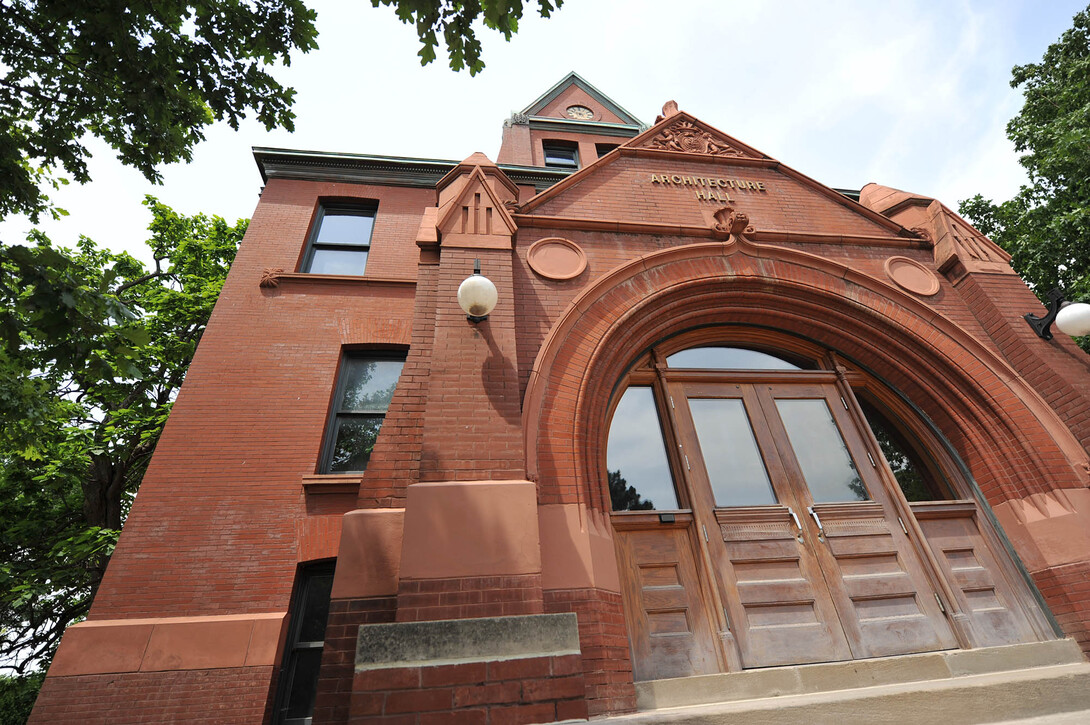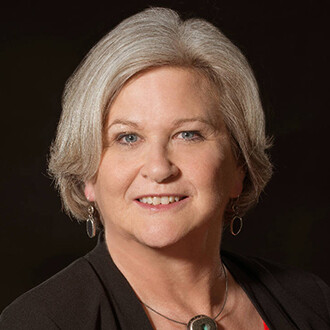
As the University of Nebraska–Lincoln prepares for the State of Diversity forum on Oct. 28, Nebraska Today is sitting down with college leaders to explore how inclusive excellence is being folded into day-to-day campus activities.
Since 2019, the university’s Office of Diversity and Inclusion has worked directly with institutional leaders in multiple ways, including through the Council of Inclusive Excellence and Diversity. Intended to connect colleges, primary campus units and ODI, the council is led by Nkenge Friday, assistant vice chancellor for strategic initiatives, with representation from across the institution.
The work of the council has been pivotal in guiding diversity, equity and inclusion plans university-wide. And, momentum realized through the council is being featured in this Q&A series.
Today, we’re continuing the series by chatting with Katherine Ankerson, dean of the College of Architecture.
This question and answer series exploring campus diversity, equity and inclusion planning will continue beyond the State of Diversity forum and into November. If your college, department or unit has a plan to feature, contact Troy Fedderson at tfedderson2@unl.edu or 402-472-8515.
What is the state of diversity, equity and inclusion planning in the College of Architecture?

Building a diverse and inclusive culture is integral to recruiting exceptional faculty, staff and students to the college.
In spring of 2019, the College of Architecture began the process of developing a strategic plan. One of the goals developed from our strategic plan involves creating a Diversity and Inclusion Recruitment and Retention Plan. Last summer, we charged the Dean’s Diversity Commission to develop that plan. From that commission, one of the action items taken includes the development of our Diversity and Inclusion web page aimed at fostering an environment that is welcoming to all and one that embraces diversity, equity and inclusion. As part of building that environment, we are featuring outstanding students and alumni from diverse backgrounds.
Our strategic plan also aims to increase diversity by 5% in our student demographics by making changes to our recruitment and enrollment strategies that allow for greater flexibility, accessibility and recruitment of underserved populations to College of Architecture programs.
Are elements of the plan already being implemented?
Diversity and inclusion are specified numerous times in our strategic plan and since then we have developed a commission and web site to support those initiatives. We also have a college sponsored local student chapter of the National Organization of Minority Architects. This organization is very active within the college, working continuously to enhance the quality of life of our students. Its mission is to champion diversity within the design professions by promoting the excellence, community engagement and professional development of its members.
Like all of our student organizations, NOMA has a representative on our Student Advisory Board. This platform provides a conduit for students to voice their concerns and a place where students work collaboratively on solutions. It also is a forum where we build community and organize student body events that represent a diverse selection of interests and perspectives.
We believe in supporting the professional development of all our students. The college frequently sponsors student trips to attend NOMA’s national conventions. One of the college’s student bloggers even shared his experiences from the last NOMA national convention in his weekly social media blog.
NOMA members have also assisted with national recruitment activities. Pre-pandemic, NOMA student members attended the National Career Fair in Chicago, where they answered questions from potential students at our recruitment table.
Our recruitment and retention efforts are expanded with financial support aimed at supporting a diverse array of students in our college as they pursue degrees in architecture, planning and design.
Furthermore, our Hyde Lecture Committee incorporated diversity and inclusion into last year’s lecture series theme “Building Justice — Design and Planning for a Just Society.” Knowing that our professions have long excluded people of color and under-served groups in both process and outcomes, the committee decided to take a deep dive and confront many of the issues that have long plagued the industry by inviting a selection of lecturers who believe that design and planning should be explicitly engaged with fostering a just society. By engaging in dialog and exploring these issues, it is an act of hope requiring, not only, an awareness of true inequity, but also a compulsion to refute it in its many forms.
Here at the College of Architecture, we support the diversity of our students and faculty and continually look for new ways to enhance and enrich the educational experiences we offer. Regardless of background, it is our aim to promote equity in education where all our students and faculty can thrive, prosper and grow.
How are individuals in the college helping advance inclusive excellence?
Especially in the wake of the Black Lives Matter movement, our faculty, staff and especially our students were motivated to make a real difference for substantive change. We have several bloggers and student mentors representing diverse backgrounds and those individuals have said they are excited to serve as role models in their communities. It’s important the next generation of students can see themselves, here, making a difference.
We are continually working to diversify both our full-time and part-time faculty; we value diverse perspectives and the insight it brings to the classroom. As such, one of the goals in our strategic plan is to develop a diversity recruitment and retention plan that cultivates the promotion of diverse faculty, staff and students in percentages that reflect or exceed peer institutions.
We recognize the importance of inclusion and are actively working to increase our enrollment and retention of students and faculty from diverse and underrepresented backgrounds. We consistently evaluate our curriculum in each of the programs to ensure we are meeting professional accreditation standards, while also broadening and deepening student opportunities to address design inequity and explore often overlooked areas of design and planning that celebrate underserved and underrepresented populations. Our eyes are set on the future and reinforced with our roles on state, national and international boards.
Is there a part of the plan that is most exciting to you and/or is having a positive impact on the college?
We are excited about all of our diversity and inclusion efforts here at the college.
It is no secret that our professions have historically underrepresented minority populations, and we as a culture, as a society and as a profession, need to do better. It starts in elementary school with outreach and exposure to the exciting and impactful professions affecting the built environment, talking to young people from all backgrounds to ignite interest.
It is our hope that the next generation of architects, designers and planners will work in a world where equality, equity and social justice are commonplace, where everyone, in every community has access to affordable housing, clean air, dependable transportation and a quality of living better than what came before them, and where job opportunities are inclusive and equitable for all.







